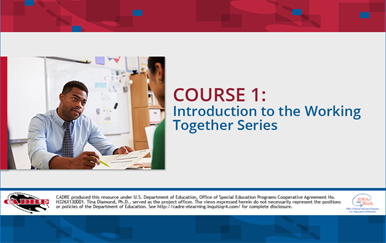Family and Educator Partnership (PEP)—Iowa
The Family and Educator Partnership (FEP) works to develop and sustain effective partnerships between families, educators, and community providers to promote success for all children and youth with disabilities.
System Design/Management
Modeling an effective collaborative partnership, the FEP is staffed by a parent coordinator who brings the perspective of a parent with a child having special needs and an educator coordinator who brings the perspective of an educator. The FEP program connects parents and educators, provides information and resources, and conducts workshops. At the local level, each of Iowa's Area Education Agencies (AEAs) have a parent and an educator coordinator on staff to direct the program within the AEA. At the state-level, the Iowa Department of Education, Bureau of Learner Strategies & Supports employs a parent coordinator who partners with educators at the department in order to provide assistance to AEAs and the children and families of Iowa.
The Partnership
The partnership involves:
-
Families with children who have special learning needs, ages birth to twenty-one, can work with the FEP to build important relationships.
-
Educators and other individuals who work with children with special needs may also access the FEP as a resource or volunteer to work with the PEC in supporting services.
Legal Requirements and Reports
While there are legal requirements in special education law that address parent participation and involvement, there is not a requirement in IDEA for states to have a service or organization such as the FEP for families and educators. Iowa is the only state in the nation that has services available across the entire state and a consultant on the state department staff.
Stakeholder Involvement
Advisory Group
Seven of the nine AEA PEC programs have steering committees that advise the FEP and examine the data that are generated for their AEA. Four AEA FEP programs make decisions about information and supports that need to be supported by the FEP in their specific region by using data, processes and family experiences within their AEA. Check with your AEA FEP to see if there is a steering committee in place if you would be interested in serving the AEA in that capacity.
Resource Allocation
Funding Sources
Iowa has maintained a 20 year history of funding the FEP program through federal Part B dollars that come to the state each year. Some AEAs provide additional in-kind contributions to the program for staff, activities and events that are administered and developed locally.
Materials/Resources
Parent and Educator Partnership Brochure
Evaluation and Continuous Quality Improvement
Program Goals
Intended Result: Families of children with disabilities and educators work in partnership to provide an education for a student which will lead to successful outcomes in school and post school.
- Indicators:
- Schools have the information they need to support parents in being involved in their children's educational program.
- Parents report that schools facilitate parent involvement as a means of improving results and services for children with disabilities.
Intended Result: Maintain strong support for families to participate in their child's education by providing the information and resources they need to transition their child with a disability to appropriate Part B services.
- Indicators:
- Families report involvement in transition decisions and planning.
- Families are informed of Part B parents' rights and responsibilities during transition planning.
Intended Result: Maintain strong support for families to participate in their children's education by providing the information and resources they need to transition their child with a disability to post-secondary activities and/or environments.
- Indicators:
- Parents state specific expectations for youth's post high school experiences.
- Families say they are involvement in transition decisions.
- Families set goals and make plans for post high school experiences.
- Families report high school activities were helpful in preparing their youth for post high school experiences.
Analysis and Reporting
Parent Survey
The FEP is taking the lead in surveying families in the state to get information regarding the partnership efforts between families and schools to address the federal indicator for parent involvement.
The Federal Department of Education, Office of Special Education Programs has indicators for both Part C and Part B in the area of parent involvement. The indicators are as follows:
- Part C Indicator- Parent of families participating in Part C who report that early intervention services have helped the family:
- Know their rights;
- Effectively communicate their children's needs; and
- Help their children develop and learn.
- Part B Indicator - Percent of parents with a child receiving special education services who report that schools facilitated parent involvement as a means of improving services and results for children with disabilities.


